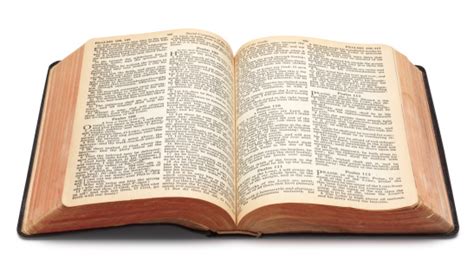Buff Scott Jr.
Sophomore
- Joined
- Jul 31, 2023
- Messages
- 297
- Reaction score
- 99
- Points
- 43
“The Great Tribulation“
“For then there will be great tribulation, such as has not been from the beginning of the world until now, no, and never will be” [Matt. 24:21].
“For then there will be great tribulation, such as has not been from the beginning of the world until now, no, and never will be” [Matt. 24:21].
Most of you who has access to this column probably believe this “tribulation” is a future event, in spite of Jesus’ forecast in Matthew 24 and Luke 21 that this terrible distress would occur in His generation, and did occur in A. D. 67-70 when the Roman Army destroyed Jerusalem and the Jewish State.
Biblical scholarship, including Adam Clarke, understands “the whole world” in verse 14 as “the whole world” of the Roman Empire. [Compare Acts 17:6 & I Peter 5:9 on the “whole world.”] Please note the symbolisms of Matthew 24.
“At that time the sign of the Son of Man will appear in the sky, and all the nations of the earth” [or Roman Empire] will mourn. They will see the Son of Man coming on the clouds of the sky, with power and great glory. And he will send His angels with a loud trumpet call, and they will gather His elect from the four winds, from one end of the heavens to the other” [Matt. 24:30-31].
1] The destruction of Jerusalem was such a terrifying example of divine judgment, described in terms like the “clouds of the sky and with power and great glory,” that all the Jewish tribes mourned.
2] “His angels” [messengers] were the apostles and those who followed afterwards.
3] The “trumpet call” was the trumpet call of the Gospel, which was heard throughout the Roman provinces and beyond.
4] The “gathering of His elect” were the Gentiles who had been chosen for salvation, in place of the rebellious Jews.
5] It should be obvious to the logistic mind that the following warnings by Jesus relate to the destruction of Jerusalem, not to His second and final coming.
Verses 17 & 18— “Let the one who is on the housetop not go down to take what is in his house, and let the one who is in the field not turn back to take his cloak.” Why? Because their time to escape the Roman Army would be limited.
Verse 19— “And alas for women who are pregnant and for those who are nursing infants in those days!” Why? To flee the Roman Army under such circumstances would almost be impossible.
Verse 20— “Pray that your flight [escape] may not be in winter or on a Sabbath.” Why? Escaping the pending tribulation would be uncommonly difficult. Under such horrific conditions, “...let those who are in Judea flee to the mountains” [V. 15].
Another interesting thought is recorded in Luke 21:28, the parallel chapter. Jesus spoke of the believers’ deliverance or liberation—“redemption.” This points to the flight out of Jerusalem and safety from the horrible calamity. This was a warning for believers to flee, as noted in verse 15 of Matthew
I think it is safe to say that Matthew 24 and Luke 21 do not refer to the second personal coming of our Lord, but rather to His coming in judgment upon the stiff-necked and rebellious Jewish nation. In light of this biblical evidence, it seems reasonable to conclude that the destruction of Jerusalem and the Jewish State are alluded to, which occurred in A. D. 67-70.
A little over 2,000 year ago a Jewish historian by the name of Josephus witnessed and recorded the war between the Roman Army and the Jewish people. The major part of the battle occurred in and around Jerusalem. The account by Josephus is almost an echo of the predictions of Jesus, as recorded in the 24th chapter of Matthew and the 21st chapter of Luke.
The war began in 67 A.D. and ended in 70 A.D. On August 10, 70 A.D., Jerusalem was stormed and what followed was a universal massacre of the Jewish people—1,100,000 perished, and 100,000 survivors were sold into slavery. Such was the “tribulation” our Lord prophesied of in verse 21.

